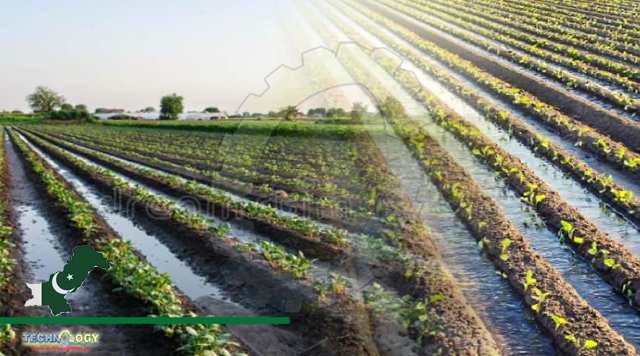The ability to increase irrigation effectiveness and decrease water losses is one of the main benefits of institutionalising ET.

Evapotranspiration (ET) monitoring stations, satellite remote sensing data, optimal irrigation scheduling plans, and irrigation performance assessment are all components of institutionalising ET, which has the potential to revolutionise Pakistan’s water management and irrigation practises.
The ability to increase irrigation effectiveness and decrease water losses is one of the main benefits of institutionalising ET. At the moment, Pakistan’s irrigation system is poorly managed, and there is a dearth of trustworthy information regarding water consumption and crop water needs.
As a result, farmers waste water and put themselves at risk for waterlogging and soil salinity by misusing the water resources that are available. Farmers can get real-time information on crop water needs by integrating ET monitoring stations and irrigation scheduling.
They will be able to optimise their irrigation techniques and cut down on water waste as a result. To evaluate the effectiveness of the irrigation system and pinpoint areas for development, irrigation performance indicators can also be established.
Regional-scale ET monitoring is also possible with remote sensing, giving decision-makers important data on crop productivity and water use. Remote sensing can be used to enhance irrigation practises, as demonstrated by the Colorado State University’s ET-based irrigation scheduling programme.
The programme has assisted farmers in reducing water use by up to 30% while maintaining crop yields by using satellite imagery to measure ET.
Pakistan can benefit from these successful examples and implement comparable techniques to enhance its irrigation and water management systems. However, substantial infrastructure and technological investments are needed to institutionalise ET.
For a developing nation like Pakistan, this can be difficult, but the long-term advantages of water conservation and sustainable agriculture make it a worthwhile investment. Institutionalizing ET can benefit Pakistan’s water management strategies in addition to increasing irrigation efficiency.
ET-based irrigation scheduling and performance indicators can receive more attention from federal water policy and state water laws. This will assist in shifting the emphasis from the current water distribution-based system to a more water-efficient system that puts an emphasis on water conservation and crop productivity.
Additionally, institutionalising ET can assist Pakistan in addressing its problems with water scarcity by giving decision-makers precise data on water use and availability.
Due to population growth, climate change, and increased demand from other sectors, Pakistan already has severe water shortages, and things are only going to get worse. Pakistan can more effectively manage its limited water resources and ensure sustainable agriculture by incorporating ET into its water management policies.
Institutionalizing evapotranspiration is a key step for Pakistan’s water management and irrigation practices. By strengthening ET monitoring stations, irrigation scheduling, and performance indicators, Pakistan can improve irrigation efficiency, reduce water waste, and address water scarcity issues.
Institutionalizing evapotranspiration is a key step for Pakistan’s water management and irrigation practices. By strengthening ET monitoring stations, irrigation scheduling, and performance indicators, Pakistan can improve irrigation efficiency, reduce water waste, and address water scarcity issues.